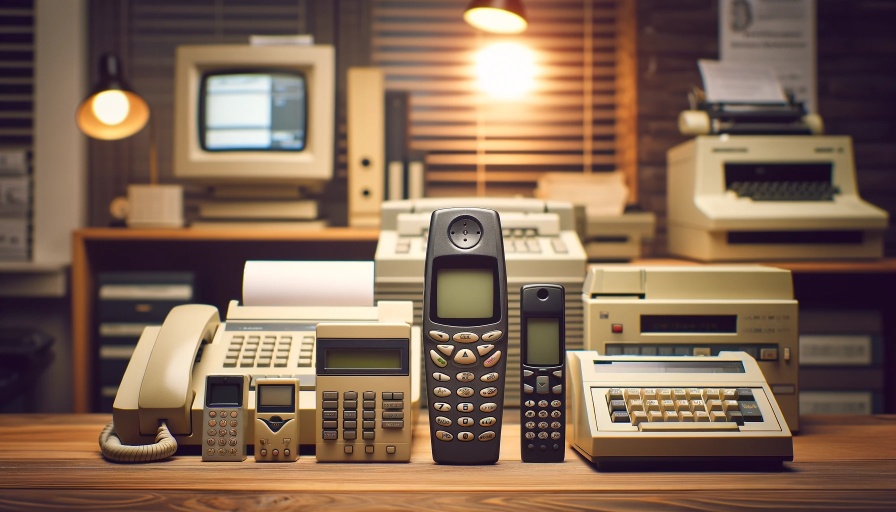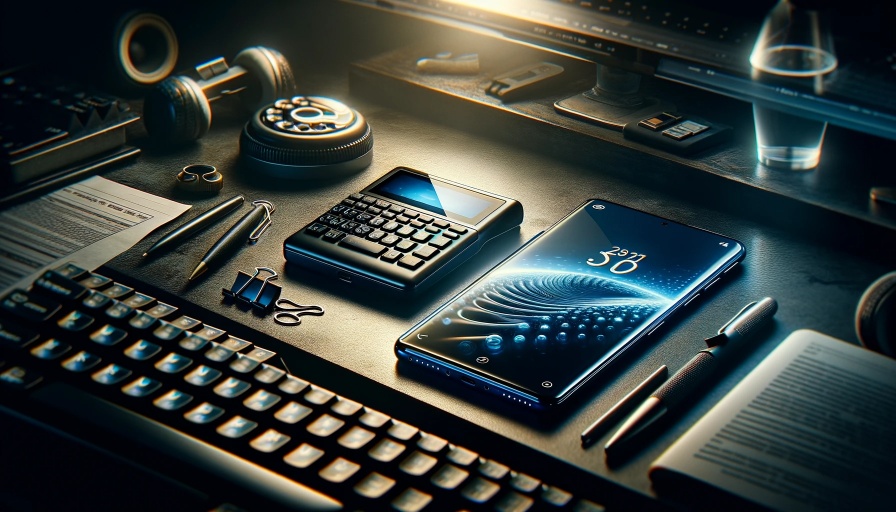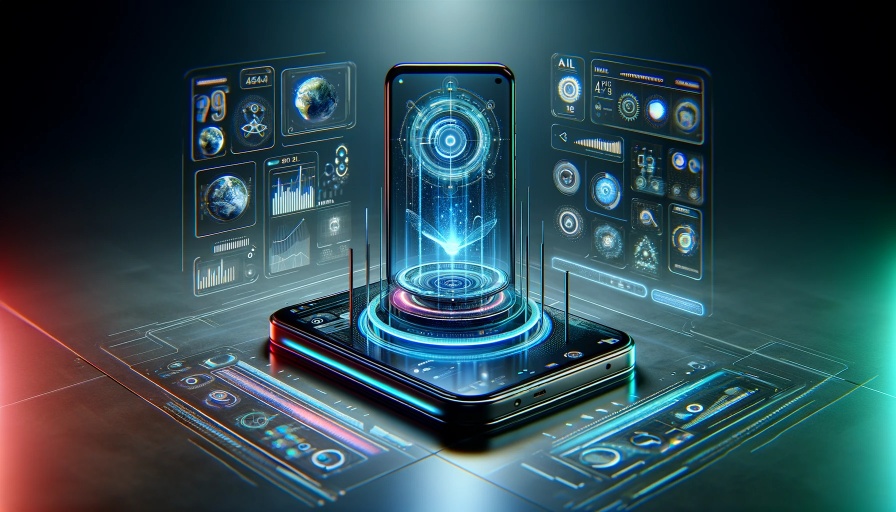In today’s digital age, smartphones have become an integral part of our daily lives. These pocket-sized devices have come a long way since their inception, evolving from simple communication tools to powerful pocket computers that can perform a wide range of tasks. This article explores the fascinating journey of smartphones, tracing their evolution from basic communication devices to the multifunctional gadgets we rely on for almost everything.
Table of Contents:
We invite you to read: “HOW IOT IS REVOLUTIONIZING HOME AUTOMATION AND SECURITY”

The Birth of the Mobile Phone
The story of smartphones begins with the humble mobile phone. In the early 1970s, the concept of a portable telephone was born, but it wasn’t until 1983 that Motorola introduced the first commercially available mobile phone, the Motorola DynaTAC 8000X. This bulky device could only make calls and had a hefty price tag, making it accessible to only a select few.
The Advent of the Feature Phone
Throughout the 1990s and early 2000s, mobile phones evolved into what we now refer to as “feature phones.” These devices offered more than just voice calls, with features like text messaging, calendars, and basic games. Nokia’s iconic Nokia 3310, released in the year 2000, became a symbol of this era with its sturdy build and iconic snake game.
The Rise of the Smartphone
The real turning point in the evolution of mobile technology came in 2007 when Apple introduced the first-generation iPhone. This marked the birth of the modern smartphone era. The iPhone combined a touchscreen interface with a powerful operating system, opening up a world of possibilities beyond traditional voice calls and text messages. Users could now access the internet, send emails, take photos, and download applications.
Apple’s competitors quickly followed suit, and the smartphone market exploded with innovation. Android-based devices like the HTC Dream (also known as the T-Mobile G1) brought competition to the iPhone, offering a customizable and open-source alternative. This fierce competition led to rapid advancements in hardware and software, giving birth to the app ecosystem we know today.
The App Revolution
One of the defining features of smartphones is the app store. The introduction of Apple’s App Store in 2008 and Google’s Play Store for Android in 2009 changed the way we use our phones. Suddenly, smartphones could transform into anything from GPS navigation devices to fitness trackers, all through the installation of third-party apps.
The app revolution led to the proliferation of social media, productivity tools, games, and countless other applications. Today, app stores are home to millions of apps, catering to virtually every aspect of our lives.
We invite you to read: “THE EVOLUTION OF MOBILE TECHNOLOGY: FROM 1G TO 5G”

The Era of Connectivity
As smartphones continued to evolve, they became the central hub for connectivity. Features like Wi-Fi, Bluetooth, and NFC (Near Field Communication) allowed users to connect their devices seamlessly. Smartphones could now interact with other gadgets, from smartwatches and fitness trackers to smart home devices.
The Emergence of Artificial Intelligence
Another significant milestone in the evolution of smartphones is the integration of artificial intelligence (AI). AI-powered virtual assistants like Siri, Google Assistant, and Alexa have made our phones smarter than ever before. These assistants can answer questions, set reminders, control smart devices, and even engage in natural conversations with users.
Pocket Computers
Today, smartphones have truly become pocket-sized computers. They feature powerful processors, ample storage space, and high-resolution displays. They are capable of running complex applications, editing documents, playing console-quality games, and even serving as creative tools for photography and videography.
Moreover, smartphones have expanded beyond traditional communication. Mobile banking, shopping, streaming music and video, and remote work are just a few examples of how smartphones have transformed our daily routines.
The Future of Smartphones
The evolution of smartphones shows no sign of slowing down. The future promises even more exciting developments, including improved AI capabilities, 5G connectivity, augmented reality (AR) and virtual reality (VR) integration, and further advancements in camera technology.
We invite you to read: “THE EVOLUTION OF CLOUD COMPUTING: WHAT’S NEXT FOR THE CLOUD?”

Conclusion
From their inception as basic communication devices, smartphones have come a long way, evolving into pocket-sized computers that enrich our lives in countless ways. They have redefined the way we communicate, work, and play, and their future potential seems limitless. As technology continues to advance, one can only wonder what the next chapter in the evolution of smartphones will bring.
FAQs
What is the history of smartphones?
Smartphones evolved from basic mobile phones and feature phones, with the introduction of the iPhone in 2007 marking a significant turning point.
How have smartphones changed over the years?
Smartphones have transformed from communication devices to pocket computers, offering features like internet access, apps, AI, and more.
What are some key features of modern smartphones?
Modern smartphones feature high-resolution displays, powerful processors, AI assistants, advanced cameras, and connectivity to various smart devices.
What is the future of smartphones?
The future of smartphones includes enhanced AI capabilities, 5G connectivity, AR and VR integration, and further advancements in camera technology.
How have smartphones impacted our daily lives?
Smartphones have revolutionized communication, work, entertainment, and convenience, becoming indispensable in our routines.
You May Also Like
- THE SILENT REVOLUTION: HOW IOT DEVICES ARE QUIETLY CHANGING OUR DAILY LIVES
- THE RISE OF INDUSTRIAL IOT: ENHANCING EFFICIENCY AND PRODUCTIVITY
- THE IMPORTANCE OF ACCESSIBILITY IN SOFTWARE DEVELOPMENT
- THE BENEFITS OF DEVOPS: HOW IT CAN IMPROVE YOUR SOFTWARE DEVELOPMENT PROCESS
- THE FUTURE IS HERE: DISCOVER THE MIND-BLOWING POTENTIAL OF IOT


Recent Comments